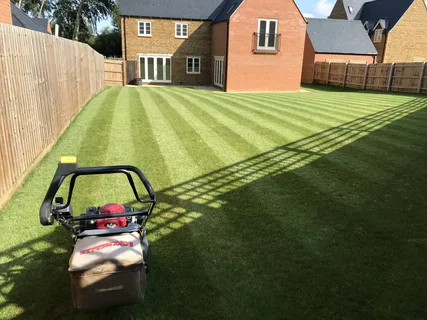A key factor in maintaining a healthy yard is pairing it with the appropriate cutting machine. For spaces measuring less than ½ acre, a push model often proves practical, offering maneuverability in tight corners. For larger plots, consider a riding machine; it significantly reduces fatigue during extended use.
Engine power plays a pivotal role. A model boasting at least 150 cc is ideal for moderate terrains, ensuring adequate performance without bogging down. For expansive areas or challenging landscapes, 300 cc and above is advisable for effortless handling and quicker cuts.
Another aspect to weigh is grass type. Thicker varieties require more robust systems capable of tackling dense foliage. A mulching option can enhance nutrient recycling, so explore machines equipped with this feature for added benefits.
Assessing Your Yard Size and Terrain Type
Measure your outdoor space accurately before selecting a cutting machine. Use a tape measure to determine the length and width, calculating the total square footage. This information is vital for matching mower specifications with the area you need to maintain.
Flat vs. Uneven Terrain
If your property features flat land, a standard push mower or ride-on unit may suit your needs. However, on uneven or hilly ground, consider models with better stability and maneuverability. Zero-turn mowers can handle slopes effectively, providing a smooth experience over challenges in the ground.
Obstacles and Features
Take note of any obstacles within your plot, such as trees, flower beds, or pathways. Select a machine that can navigate around these features without difficulty. A compact design or a mower with a smaller turning radius may be ideal in such scenarios. For further information and tips, visit Garden Machinery Hub.
Understanding Different Lawn Mower Types Available
Electric models, categorized into corded and cordless, offer convenience and low maintenance. Corded options are ideal for small to medium spaces with power access, while battery-operated variants enable freedom of movement and are suitable for slightly larger areas without extension cords.
Gas-powered variants provide robust performance for extensive terrains. Their engines typically come in two-stroke or four-stroke types, with four-stroke models being more fuel-efficient and environmentally friendly. This choice is preferable for larger plots with thick grass or overgrowth.
Reel mowers deliver a manual approach, perfect for small, flat areas. These push models require physical effort but operate silently and without emissions. They are suitable for maintaining healthier grass by providing a clean cut.
Ride-on machines cater to expansive lawns, offering speed and efficiency. Zero-turn models excel in maneuverability, allowing for precise cutting around obstacles without needing to adjust direction frequently, while lawn tractors are versatile with attachments available for leaf collection and snow removal.
Robotic varieties have gained popularity due to their automation. Suitable for smaller or moderately-sized yards, these devices operate independently, navigating through predefined paths. Ideally, they minimize labor while ensuring consistent upkeep.
Factors to Consider When Selecting
- Size of area: Consider the square footage to determine power needs.
- Terrain type: Rough, hilly, or flat lands affect which model performs best.
- Storage space: Assess if there’s enough room for larger units or if compact options fit better.
- Operating frequency: Frequency of use influences the long-term investment based on durability and performance.
Price Points and Maintenance
- Budget: Electric models generally cost less than gas-powered ones, although high-end models can vary significantly in price.
- Maintenance requirements: Gas engines need more regular upkeep compared to electric variants, which require minimal servicing.
- Warranty and service options: Check for manufacturer support to ensure longevity and reliability.
Evaluating Power Sources: Gas, Electric, or Battery?
For smaller areas or residential settings, electric models offer a quiet and low-maintenance option. They are lightweight, starting with the push of a button, making them user-friendly. Consider corded types to eliminate charging issues, while battery-operated options provide freedom of movement without cables, ideal for medium-sized properties.
Gas-powered alternatives deliver strength and extended runtime, suitable for expansive spaces with tall grass or uneven terrain. They typically feature greater cutting capacity but require regular maintenance like oil changes and filter replacements. Weigh the benefits against noise levels and emissions, as these can impact your environment.
Comparing Runtime and Fueling Needs
Determine how long you plan to mow and select a power source accordingly. Battery models vary in run time, so it’s crucial to choose one that matches your mowing schedule. Gas models can operate as long as you have fuel on hand, making them reliable for larger tasks.
Choosing the Best Fit
Assess convenience versus power. If quiet operation and easy storage matter more, then opt for electric. For robust performance in larger lawns, gas might be your best bet. Check resources like All tools for you for various options, or consult Tommy for Wisconsin for expert advice tailored to your unique circumstances.
Considering Maintenance Requirements for Each Mower
Select models with lower maintenance needs if time is a constraint. Electric and battery-powered options typically require less upkeep compared to gas varieties. No oil changes, fuel filters, or spark plug replacements are necessary for electric units.
Gas-powered options demand regular checks on oil levels, air filters, and spark plugs. Ensure the engine is properly maintained to avoid performance issues. Keep spark plugs clean and replace filters to enhance longevity.
Cylinder mowers, while effective, require frequent blade sharpening and adjustments. Keep this in mind if precise cutting is a priority. Rotary mowers ease maintenance with self-sharpening blades, but still need routine cleaning to prevent grass buildup.
Consider seasonal tasks too. Battery-operated mowers should have batteries charged and stored properly during off-seasons. Gas mowers require fuel stabilization and possibly draining fuel to prevent contamination.
Evaluate your willingness to perform consistent checks and maintenance versus convenience. A well-maintained machine will function effectively, extending its lifespan and ensuring optimal performance.
Setting a Budget: What to Expect for Different Models
Establishing a financial plan is crucial for acquiring a grass trimmer. Prices typically range from $150 to over $3,000, depending on features and capabilities.
Entry-Level Options
Basic rotary machines, ideal for small to medium plots, can be found priced between $150 and $400. These models often include manual push mechanisms and may lack advanced features. However, they serve well for simple maintenance tasks.
Mid-Range Selection
Machines in the $400 to $1,500 bracket often feature self-propelled capabilities and larger cutting widths. More sophisticated models may offer various cutting heights and additional comfort features, such as cushioned handles and adjustable speeds, making them suitable for larger areas.
High-End Models
For those willing to invest significantly, professional-grade units start from $1,500 and can exceed $3,000. These units showcase commercial power, larger engines, enhanced durability, along with advanced technology, including robotic options and zero-turn capabilities for effortless maneuvers.
Additionally, consider warranty options and potential long-term maintenance costs when evaluating prices, as these can contribute significantly to overall expenditure.




